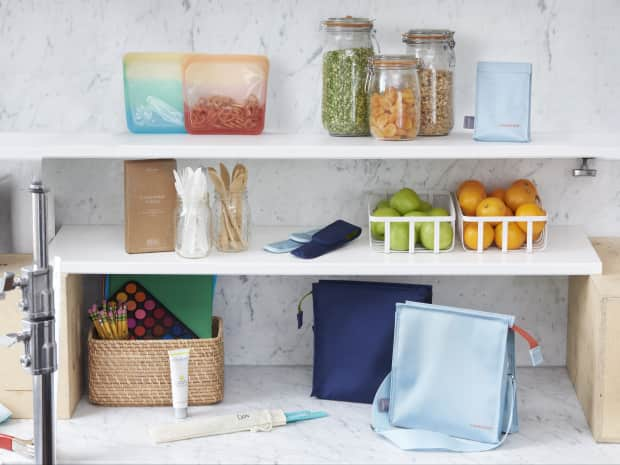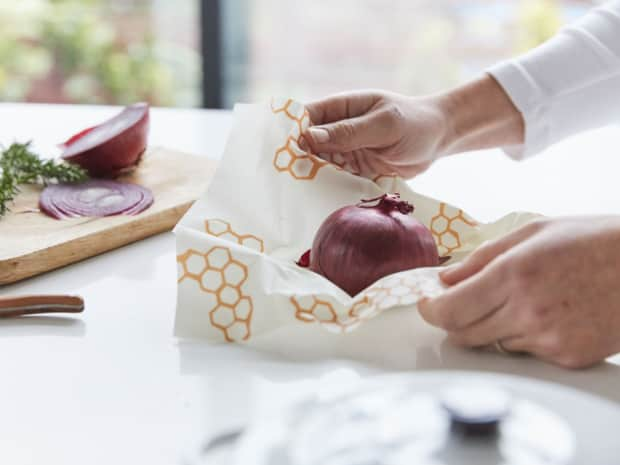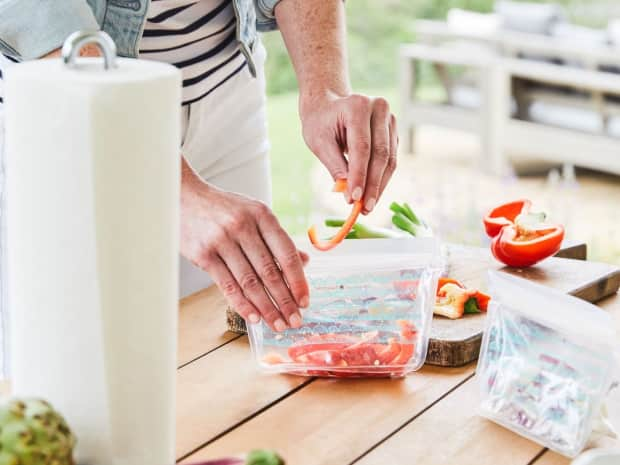
Guide to Going Plastic-Free: 10 Easy Tips & Tricks
Here’s how to go plastic free if you're just getting started — and how to level up if you're ready to commit.
Read More


Last Updated: June 23, 2022
Now’s the perfect time to detox your pantry of plastic containers, outdated kitchen tools, and expired items. Let professional organizer, simplifier, and author Monica Leed show you how simply it can be done with her tips.
Your pantry — whether it’s a luxurious walk-in space or a few hard-working, dedicated cabinets — is there to make your kitchen run as smoothly and efficiently as possible. An organized and sustainably outfitted pantry will make the time you spend cooking that much easier.
To help you get started, we spoke with Monica Leed, author of Simply Spaced: Clear the Clutter and Style Your Life. As the principal founder of Simply Spaced, LLC, a professional organizing company headquartered in Los Angeles, Leed has developed a straightforward approach to tackling clients’ pantries to make the heart of the house both more efficient and eco-friendly.
Here's a step-by-step action plan for how you can put her recommendations to work in your own home.
“Decanting allows you to see what you have, saves space, and it gives your space a magazine-ready feel that’s functional — and healthier than plastics,” Leed says. “Glass jars also keep your pantry staples fresher for longer.”
Not yet ready to shell out for a pantry of matching glass containers? Give your empty jars of pasta sauce, pickles, and peanut butter new life. As old plastic containers wear down or need replacing, switch in your repurposed mason jars and other glass containers with lids.
Pro Tip
Not into labeling? Keep track of the purchase date of your items (so you know when they might be expiring) with a white chalk paint marker or wipeable Sharpie marker on the bottom of your bulk food canisters.
Take everything from liquid soap to flour and baking items out of their plastic packaging and put them in glass jars.
“If you are in the ‘life’s too short to decant your cornflakes’ camp, that’s fine, too,” Leed says. “Decant the items that make the most sense to you.”
Bulk purchases reduce your single-use plastic purchases and almost always save you money. Bonus: Instead of bringing home bulk buys in the provided plastic bags, bring in your own containers (be sure to check with your local store’s practices) to fill insteaad of plastic ones. At many health food stores and shops like Whole Foods, you can ask to have your container weighed before filling it.
“Bring in your own glass mason jars for flour, beans, and oats, and cloth bags for produce and fruit,” Leed suggests.
Pro Tip
Decanting super seeds like chia or flax? Refrigerate them in their glass jars after opening for freshness.
You can easily reduce your use of conventional cleaning products and tools by choosing natural-fiber scrubbers and reusable cleaning cloths. Cut down on landfill plastics by rethinking how you purchase your liquid soaps.
Try sustainable scrubbers, like this Grove Co. Walnut Scrubber Sponge created with crushed walnut shells and recycled plastic fibers — the sponge side is made from 100% plant-based cellulose. Or swap out those conventional paper towels for washable cleaning cloths. Read more about other reusable paper towels options and how they hold up here.
Purchase cleansers in multiple-fill packaging to reduce waste. Cleaning concentrates, dish soap refills and hand soap refills all cut down on one-use plastic packaging. Find a dish soap or hand soap dispenser to hold your liquids and style up your sink too.
Leed recommends doing a pantry spring cleaning (so to speak) every couple of months so you don't lose expired items or molding bread to the back of your pantry shelves.
Here are her 12 tips for tossing:
Pro Tip
Once you've tossed out all of those unused pantry items, you can now reorganize what you've kept. Create stations based on common kitchen activities. If you’re an at-home barista, create a coffee station complete with hanging mugs. Give yourself a fun and easy morning routine!
Reorganizing your pantry space can deeply affect how you shop, cook, and eat. Organizing and streamlining works for everyone, from minimizing the overshopping and food waste that can happen with a large pantry to completely maximizing and amplifying a minimal pantry space.
“If your kitchen is out of control, that imbalance can affect many areas of your life,” says Leed. “Getting your pantry kitchen [organized] is an empowering first step in kickstarting your organizational journey.”
Here's a 9-step checklist to go through when reorganizing your pantry.
“The kitchen is in constant flux like no other area of the home. Food flow changes daily, as do the tools and trials that accompany food prep,” says Leed.
Pro Tip
These classic food pairings actually shouldn’t be stored together. In both cases, the produce of one off-gasses and spoils the other: onions and potatoes and apples and bananas.
From natural household to personal care, everything at Grove is healthier for you and the planet — and works! We recommend monthly shipments and product refills that you can edit or move at any time. No monthly fees or commitments required.

Here’s how to go plastic free if you're just getting started — and how to level up if you're ready to commit.

With these reusable equivalents, you can kiss single-use trash goodbye.

What are toothpaste tablets, how do they work, and why choose them over paste.

We've pulled the top 14 food storage containers as determined by Grove members.